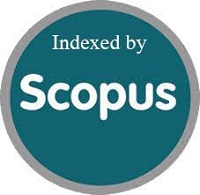Uji Validitas Konstruk Instrumen Health Professional Stress Inventory (HPSI)
DOI:
https://doi.org/10.15408/jp3i.v4i2.9289Keywords:
Penyebab Stres-Spesifik Pekerjaan, Kondisi Pekerjaan, Ketidakpastian Pekerjaan, Kurangnya Pengakuan dan Dukungan secara Professional, Konflik Interpersonal, Analisis Faktor KonfirmatorikAbstract
Abstract
Job specific stressor is factors that cause specific stress to health worker in comparison to other factor that made them susceptible with burnout. Job specific stressor consist in four dimensions, those are job conditions, job uncertainty, lack of professional recognition and support, and interpersional conflict. Health Professional Stress Inventory (HPSI) is an measurement instrument that developed by Wolfgang (1988). The purpose of this research is to test the construct validity of the instrument. Data of this research was collected from nurses in one of the hospital in Banten and Jakarta. Respondent that became the respondent in this research is 123 nurses. Result showed that 5 of 8 items can measure job condition, 8 of 9 items can measure job uncertainty, all items in lack of professional recognition and support (11 items), and interpersonal conflict (3 items) can measure each dimensions well.
Abstrak
Job specific stressor adalah faktor-faktor yang menyebabkan stres pada pekerja kesehatan yang terjadi lebih spesifik dibandingkan beberapa faktor umum lainnya yang membuat mereka rentan terhadap burnout. Terdiri dari empat dimensi yaitu kondisi pekerjaan, ketidakpastian pekerjaan, kurangnya pengakuan dan dukungan secara professional, dan konflik interpersonal. Health Professional Stress Inventory (HPSI) merupakan instrumen pengukuran yang dikembangkan oleh Wolfgang (1988). Penelitian ini bertujuan untuk menguji validitas kostruk instrumen tersebut. Data dalam penelitian ini diperoleh dari perawat di salah satu rumah sakit umum daerah di Banten dan Jakarta. Sebanyak 123 perawat menjadi responden dalam penelitian ini. Hasil dari penelitian ini menunjukkan bahwa 5 dari 8 item dapat mengukur job condition, 8 dari 9 item dapat mengukur ketidakpastian pekerjaan, seluruh item kurangnya pengakuan dan dukungan secara profesional (11item), dan konflik interpersonal (3 item) dapat mengukur masing-masing dimensi dengan baik.
References
DAFTAR PUSTAKA
Feist, J. & Feist, G.J. (2009). Theories of personality. 7th ed. New York: McGraw-Hill.
Funk, S.C & Houston, B.K. (1987). A critical analysis of the hardiness scale's validity and utility. Journal of Personality and Social Psychology, 53 (3): 572-578.
Joreskog, K.G. & Sorbom, D. (1999). LISREL 8.70 for windows (computer software). Lincoln-wood, IL: Scientific Software International, Inc.
Maslach, C & Jackson, S. (1981). The measurement of experienced burnout. Journal of Occupational Behaviour. Vol. 2.99-113. 1981.
Pervin, A. L. & John, O.P. (2001). Personality theory and research. 8 ed. New York: John Willey.
Scaufeli, W.B., Buunk, B.P. (1996). Chapter fifteen: Professional burnout. In M.J. Schabraq, J.A.M Winnbust & C.L Cooper (ed). Handbook of Work and Health Psychology. (311-346): John Wiley & Sons Ltd.
Spooner, R & Patton, W. (2005). Determinants of burnout among public hospital nurses. Australian Journal of Advanced Nursing, Vol.25 No.1.
Taylor, Shelley. 2009. Health Psychology, 7ed. New York: McGraw-Hill Companies, Inc.
Umar, Jahja. (2011). Bahan kuliah psikometri. UIN Jakarta. Tidak diterbitkan.
Windayanti & Prawasti, C.Y. (2007). Burnout pada perawat rumah sakit pemerintah dan swasta. JPS. Vol.13 No.2



